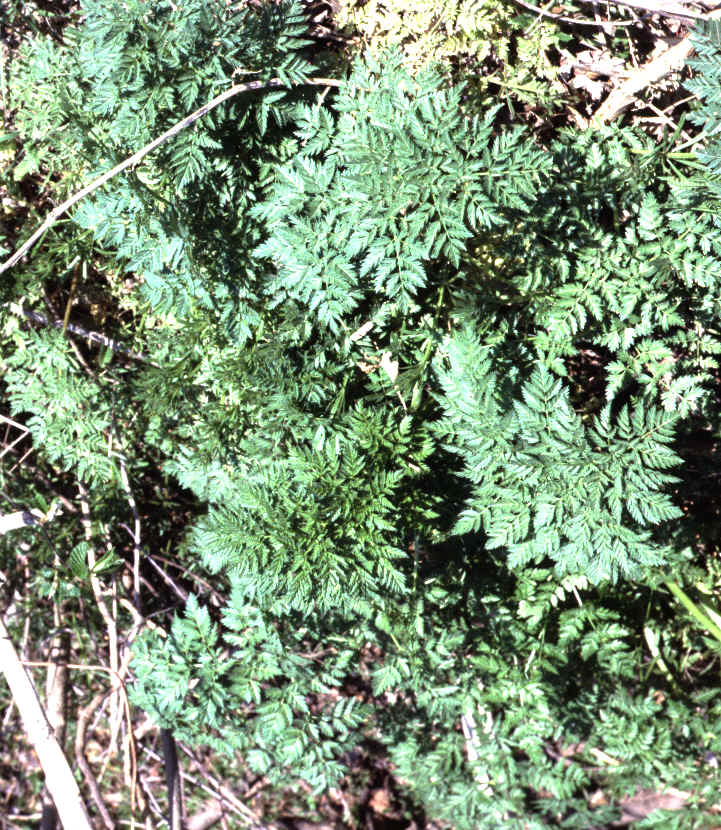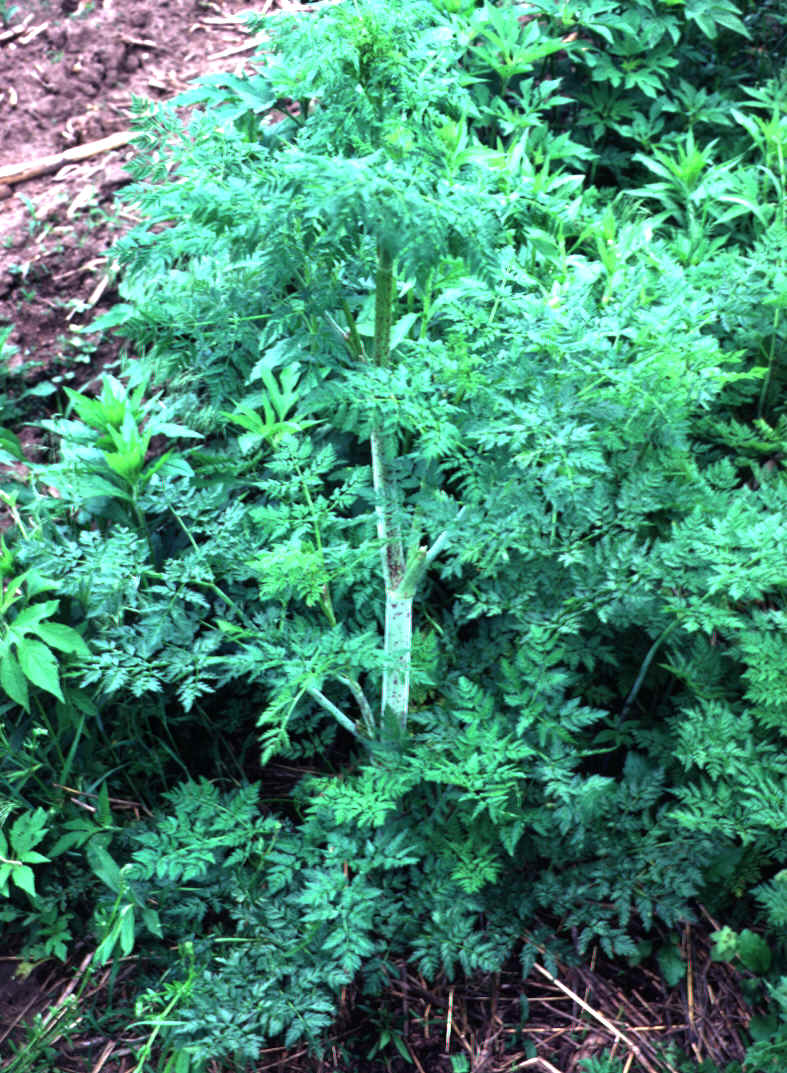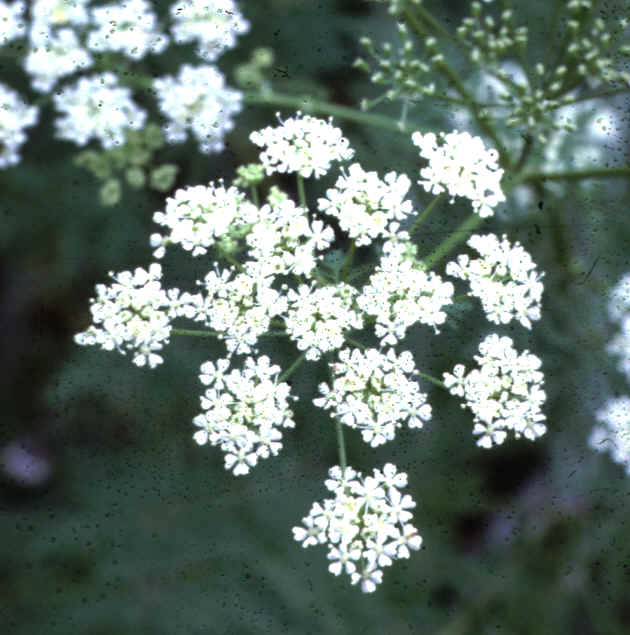

Poison Hemlock


Vegetative plants. Key characteristics: hairless and purple-spotted, hollow stems. Leaves are pinnately compound, arranged alternately and hairless.

Flowers. Key characteristics: white and produced in compound umbels.
Heavy infestation of poison hemlock on waste ground.
Seed. Two seed are contained in each pericarp which is divided by a longitudinal line; color is grayish-brown and length is approximately 2.0 mm.
Life cycle: biennial.
Toxic Plant: All animals may be affected. Grazing animals, swine and animals that may eat the seeds (especially poultry) are more at risk than pets. All parts of the plant are considered toxic, especially the young leaves, stems and seeds. Symptoms include nervousness, trembling, incoordination, depression, coma, death and birth defects. Poison hemlock’s toxic components include the volatile alkaloids coniine and gamma-coniceine, which are believed to have put Socrates to death. A lethal dose for a horse is reported to be 4 to 5 pounds of leaves, while cattle may be poisoned with 1 to 2 pounds and sheep with a half-pound or less. Humans have been poisoned by mistaking the roots of poison hemlock for parsnips, the leaves for parsley, or the seeds for anise.